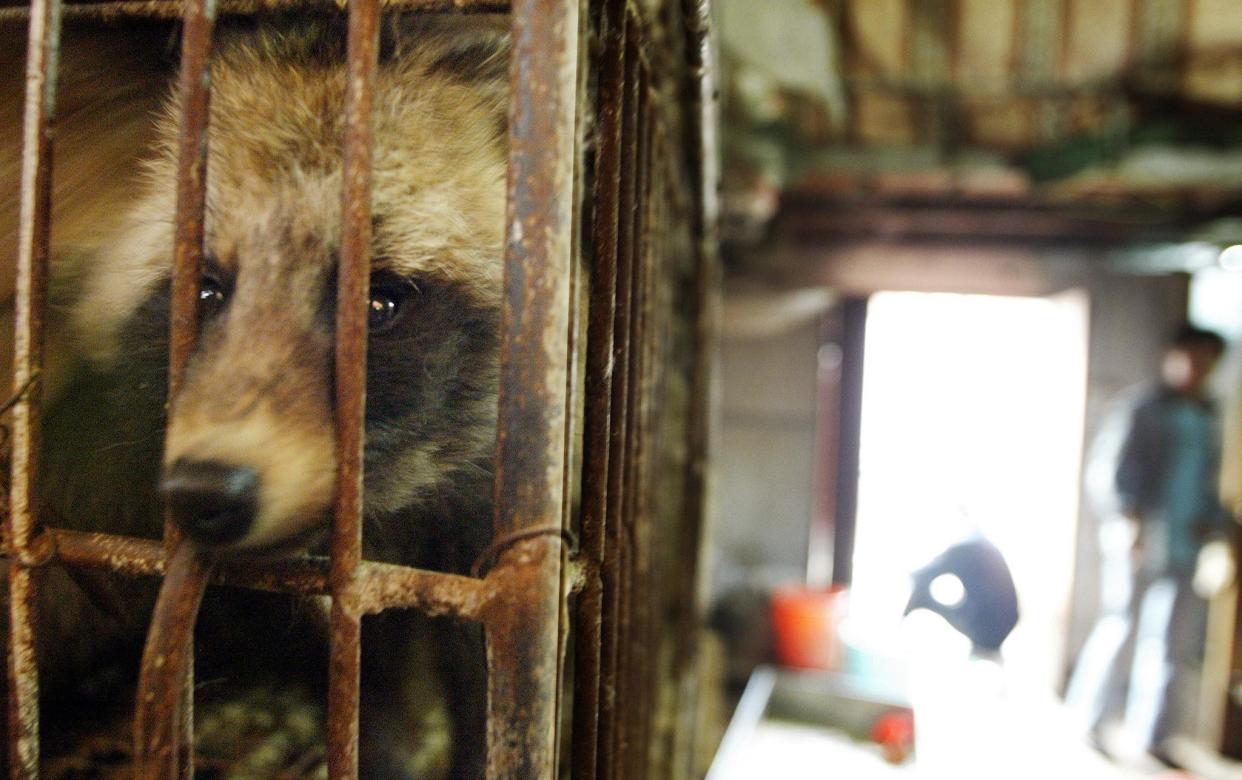Covid origins debate intensifies as China releases new Wuhan market analysis

Chinese officials have released an updated analysis of more than 1,300 samples taken from the Wuhan wet market at the beginning of the Covid-19 pandemic.
In a preprint published on Wednesday, researchers from the Chinese Center for Disease Control and Prevention said there was “convincing evidence” that Sars-Cov-2 was spreading widely at Wuhan’s Huanan seafood market in January 2020.
But they claimed it’s not clear how Covid got there, as no virus was found in the 457 animal swabs taken from 18 species at the market.
Instead, they suggested Sars-Cov-2 could have been “introduced by a human or cold chain product” – a route consistently mooted by China – though they did call for for “enhanced” surveillance of wild animals to find potential hosts and prevent a repeat.
The data behind the latest Chinese research has proved controversial, after a team of international experts downloaded the genetic sequences that had been discreetly shared on a database called GISAID. Their analysis was the first conducted on the data outside China, which has been accused by the World Health Organization of withholding critical clues.
In samples taken from the Wuhan market that tested positive for Covid, the international team found genetic material from wildlife known to be susceptible to Sars-Cov-2 – including racoon dogs, palm civets and Himalayan marmots. This does not prove these animals were infected, but does confirm they were being illegally sold at Huanan market in early 2020.
“What we are seeing is the genomic ghost of that animal in the stalls,” said Dr Florence Débarre, an evolutionary biologist at the French National Centre for Scientific Research, who first spotted the data when trawling GISAID.
“It’s close to the best [evidence] we can get, because the animals were gone when they came to sample the markets,” she told the Telegraph earlier this month.
Data ‘should have been shared three years ago’
The latest paper from China CDC – published on ChinaXiv on Wednesday – reveals that although researchers sampled 18 species including bamboo rats, wild boars and hedgehogs, they did not take specimens from animals including raccoon dogs now known to be susceptible to the virus. It is likely that this is because they had already been removed.
Some researchers said this undermines the CDC’s suggestion that animals did not bring the virus into the market – a route that China has consistently discredited, much like the potential for a laboratory leak, as it does not want the origin to be within its own borders.
“This claim that no live animals with the virus were found at the market is one of the most pernicious and misleading talking points proffered,” said Dr Michael Worobey, an evolutionary biologist at the University of Arizona who led the international analysis.
“If no live raccoon dogs… or other plausible intermediate hosts species were tested (because they had all disappeared by the time this testing took place), then saying that the lack of Sars-CoV-2 live animals at the market is evidence against a zoonotic origin is at best misinformed. At worst, it is deliberate disinformation,” he told the Telegraph.
Speaking at a press conference after being presented with both the China CDC and international reports, Dr Tedros Adhanom Ghebreyesus, head of the WHO, said that neither rule out a laboratory leak or provide conclusive evidence about how the pandemic began.
“Every piece of data is important in moving us closer to that answer, and every piece of data… needs to be shared with the international community immediately,” he said. “This data could and should have been shared three years ago.”
Prof Jonathan Ball, a professor of virology at the University of Nottingham who was not involved either report, added: “Without that smoking gun of an animal from the market testing positive we will never know for sure how the pandemic started, but the weight of evidence clearly points to the Huanan Market and in particular the part where live animals were traded.”
The latest China CDC paper said: “More work involving international coordination is needed to investigate the potential origins of SARS-CoV-2. Surveillance of wild animals using a viromic approach should be enhanced to explore the potential natural and intermediate hosts for SARS-CoV-2, if any, which would help to prevent future pandemics caused by animal-origin coronaviruses or alike, with a spillover event.”
Protect yourself and your family by learning more about Global Health Security

 Yahoo News
Yahoo News 
